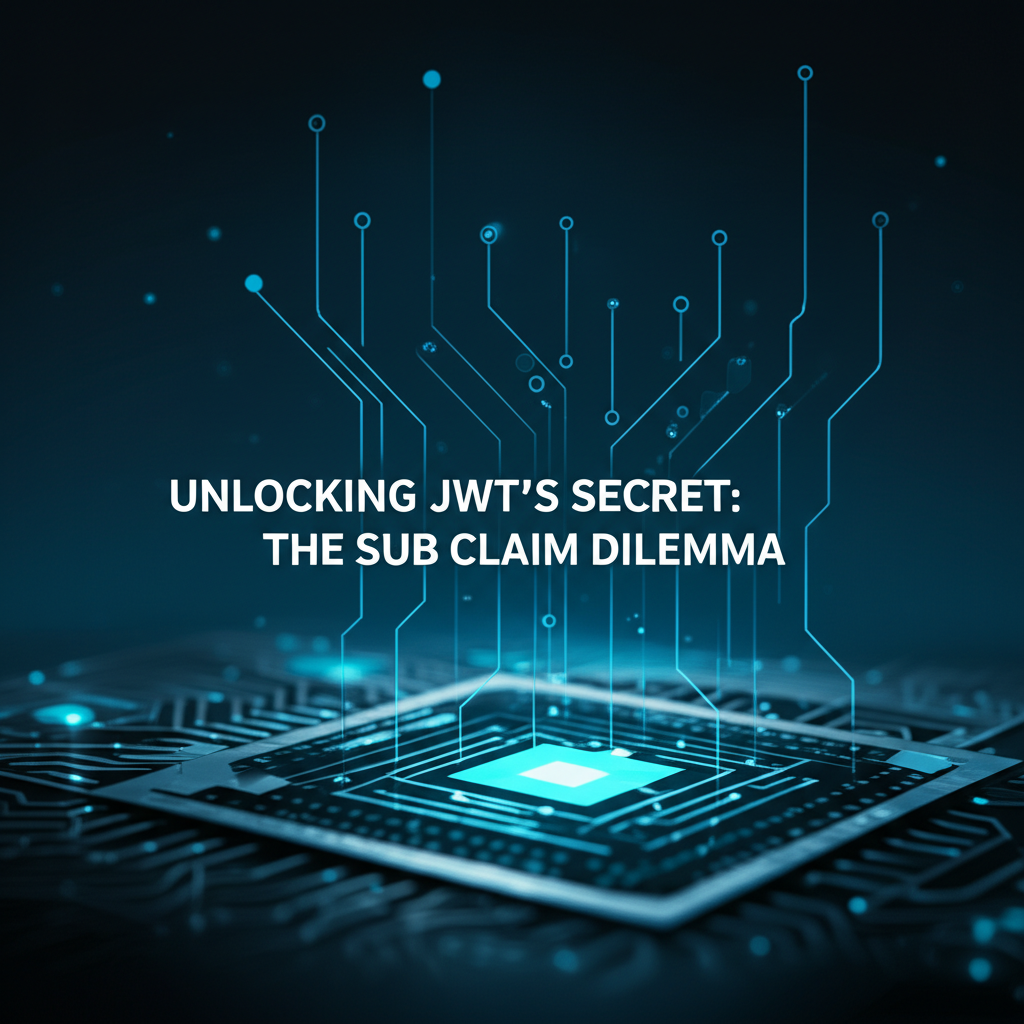Unlocking JWT's Secret: The Sub Claim Dilemma

Introduction
JSON Web Tokens (JWT) have become a staple in modern web applications, providing a secure and efficient way to transmit information between parties as a JSON object. The Sub claim, often found within JWT tokens, is a critical component that carries user identity information. However, managing the Sub claim can be a complex task, especially when considering the various security implications and the need for a robust API Gateway. This article delves into the intricacies of the Sub claim, its role in JWT, and how the Model Context Protocol (MCP) can be leveraged to address the Sub claim dilemma.
Understanding JWT and the Sub Claim
JWT Overview
JWT is an open standard (RFC 7519) that defines a compact and self-contained way for securely transmitting information between parties as a JSON object. It is used mainly for stateless authentication and information exchange. JWT tokens consist of three parts: the header, the payload, and the signature.
- Header: Defines the algorithm used to secure the token and the type of the token.
- Payload: Contains the claims about the entity, commonly used to store user information.
- Signature: Ensures the integrity and authenticity of the token.
The Sub Claim
The Sub claim, short for Subject claim, is a part of the payload that identifies the principal that is the subject of the JWT. This principal is typically a user, but it could also be an application or a device. The Sub claim is one of the most critical claims in JWT because it is often used to determine the user's identity and permissions.
The Sub Claim Dilemma
Managing the Sub claim in JWT tokens presents several challenges:
- Security Risks: If the Sub claim is not properly secured, an attacker could manipulate it to gain unauthorized access.
- Consistency: Ensuring that the Sub claim is consistent across different systems and services can be difficult.
- Scalability: As the number of users and services grows, managing the Sub claim becomes more complex.
Leveraging the Model Context Protocol (MCP)
MCP Overview
The Model Context Protocol (MCP) is a framework designed to facilitate the communication between different models and services in a distributed system. MCP can be particularly useful in addressing the Sub claim dilemma by providing a standardized way to handle user identity and permissions.
MCP and the Sub Claim
By integrating MCP with JWT, we can enhance the management of the Sub claim in several ways:
- Standardized Identity: MCP can standardize how user identities are represented and managed across different services, ensuring consistency.
- Enhanced Security: MCP can provide additional security measures to protect the Sub claim, such as using digital signatures and encryption.
- Scalability: MCP can help scale the management of the Sub claim by providing a centralized and efficient way to handle user identity information.
APIPark is a high-performance AI gateway that allows you to securely access the most comprehensive LLM APIs globally on the APIPark platform, including OpenAI, Anthropic, Mistral, Llama2, Google Gemini, and more.Try APIPark now! 👇👇👇
Implementing MCP with API Gateway
API Gateway Role
An API Gateway is a critical component in modern web applications that serves as the single entry point for all API requests. It can be used to implement MCP and manage the Sub claim effectively.
Steps to Implement MCP with API Gateway
- Define Identity Model: Use MCP to define a standardized identity model that includes the Sub claim.
- Secure Communication: Implement secure communication protocols between the API Gateway and other services using MCP.
- Token Validation: Validate JWT tokens at the API Gateway, ensuring that the Sub claim is consistent with the identity model.
- Permission Management: Use the API Gateway to manage permissions based on the Sub claim and other claims in the JWT token.
Case Study: APIPark
APIPark Overview
APIPark is an open-source AI gateway and API management platform that can be used to implement MCP and manage JWT tokens, including the Sub claim. APIPark provides a comprehensive set of features to help developers and enterprises manage their APIs and services efficiently.
APIPark and the Sub Claim
APIPark can be used to implement the following steps for managing the Sub claim:
- Identity Model Configuration: Configure the identity model in APIPark to match the standardized model defined by MCP.
- Token Validation: Use APIPark to validate JWT tokens and ensure that the Sub claim is consistent with the identity model.
- Permission Management: Implement permission management in APIPark based on the Sub claim and other claims in the JWT token.
Conclusion
Managing the Sub claim in JWT tokens is a complex task that requires careful consideration of security, consistency, and scalability. By leveraging the Model Context Protocol (MCP) and integrating it with an API Gateway like APIPark, developers can enhance the management of the Sub claim and ensure secure and efficient user authentication and authorization.
Table: JWT Token Structure
| Component | Description |
|---|---|
| Header | Defines the algorithm used to secure the token and the type of the token. |
| Payload | Contains the claims about the entity, commonly used to store user information. |
| Signature | Ensures the integrity and authenticity of the token. |
FAQ
1. What is the Sub claim in JWT? The Sub claim, short for Subject claim, is a part of the payload in JWT tokens that identifies the principal, typically a user, that is the subject of the JWT.
2. How does MCP help in managing the Sub claim? MCP can standardize how user identities are represented and managed across different services, enhance security, and help scale the management of the Sub claim.
3. What is the role of the API Gateway in managing the Sub claim? The API Gateway can be used to validate JWT tokens, ensure consistency of the Sub claim, and manage permissions based on the Sub claim.
4. Can APIPark be used to manage the Sub claim? Yes, APIPark can be used to configure the identity model, validate JWT tokens, and manage permissions based on the Sub claim.
5. How does APIPark help in enhancing security of the Sub claim? APIPark can implement secure communication protocols, validate JWT tokens, and manage permissions, all of which contribute to enhancing the security of the Sub claim.
🚀You can securely and efficiently call the OpenAI API on APIPark in just two steps:
Step 1: Deploy the APIPark AI gateway in 5 minutes.
APIPark is developed based on Golang, offering strong product performance and low development and maintenance costs. You can deploy APIPark with a single command line.
curl -sSO https://download.apipark.com/install/quick-start.sh; bash quick-start.sh

In my experience, you can see the successful deployment interface within 5 to 10 minutes. Then, you can log in to APIPark using your account.

Step 2: Call the OpenAI API.



